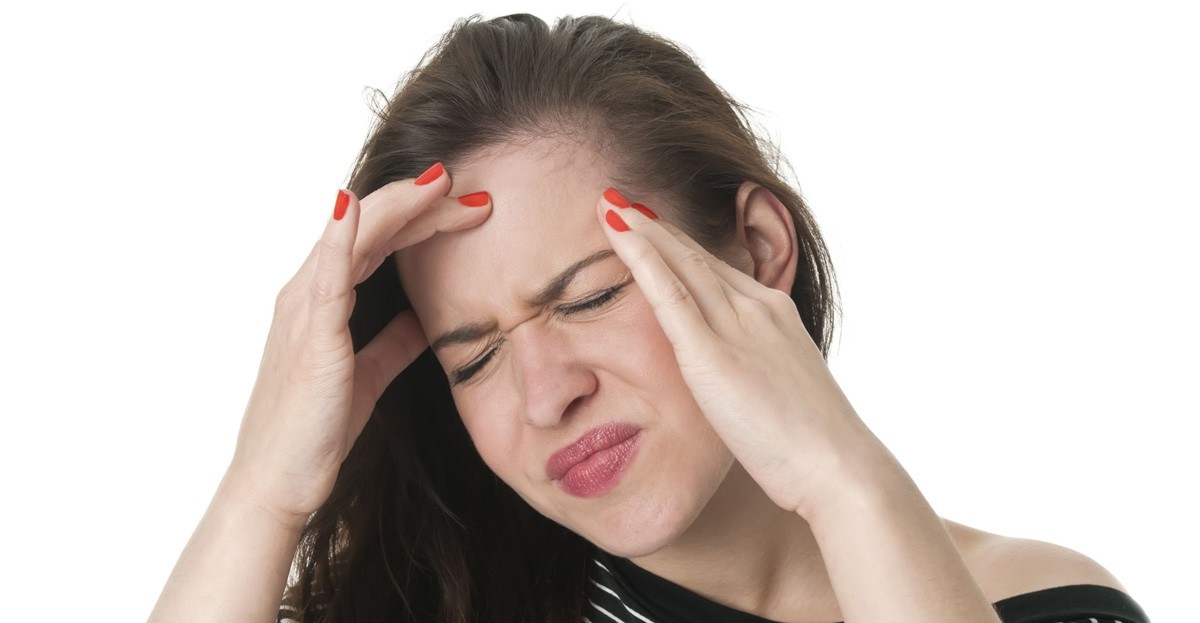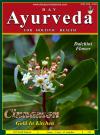Ayurvedic Solutions for Migraine
Migraine is a severe and painful headache. It is a common health condition affecting 1 in every 5 women and around 1 in 15 men. WHO identified migraine as the 3rd most prevalent illness in the world, one that is so incapacitating that during an attack sufferers are often unable to function normally. Chronic and recurrent migraine can seriously diminish one’s quality of life. Some people who suffer from migraine can clearly identify triggers that cause it such as sun light, stress, crowd, fasting, exertion & loud sounds.
The symptoms of migraine vary from person to person and the individuals may have different symptoms during attacks. Attack may differ in length and frequency. Headache usually lasts from 4-72 hrs. and people are free from symptoms between attacks.
Some people suffer from warning features before the migraine commences called Aura in the form of confusing thoughts, perception of strange flashing lights, black spots in the vision, difficulty in speaking, tingling in the arms and legs.
Factors Triggering Migraine
Hormonal changes in women
Immediately before or during periods.
Hormonal medications
Such as oral contraceptives and hormone replacement therapy.
Food
Aged cheese, salty and processed food, chocolates , soya sauce, ripe avocados, dry fruits.
Food additives
The sweetener aspartame and preservative monosodium glutamate found in many ready to eat foods.
Drinks
Alcohol and highly caffeinated beverages like coffee & tea.
Stress
At work or home.
Sensory stimuli
Bright light and sun glare, loud sounds, strong smells including perfumes, paint, thinner and second hand smoke.
Change in wake-sleep patterns
Missing sleep or getting too much sleep.
Physical factors
Intense physical work, poor posture.
Emotional triggers
Anxiety, shock, depression & failure.
Change in environment
Change of weather or barometric pressure.
Dietary changes
Missed, delayed or irregular meals.
Dehydration
Risk Factors
Family history
Migraine sufferers share the same condition with a close relative which is suggestive of the role of genes.
Age
Can begin in any age. Tend to peak during 30’s and gradually becomes less severe and less frequent in the following decades.
Sex
Women are 3 times more likely to have migraine.
Cause of Migraine
The exact cause is unknown although thought to be the result of temporary changes in chemicals, nerves and blood vessels in the brain.
Management of Migraine
Number of treatments are advised by modern physicians for the patients of migraine including painkillers, tryptans, antiemetics, sedatives and vasodialators. But these work for short period and also have serious side effects. For the effective results first and foremost step is to be taken by the sufferer himself. He/she should avoid all the trigger factors and should recognize the warning features of migraine and prevent a full blown attack by acting upon these signs.
Ayurvedic Therapies for Migraine
Ayurveda has solutions for this distressing condition in many forms.
Shirolepa
Application of herbal pastes of Sandalwood, Camphor, Jatamansi, Dhaniya beej, Pepper, Shunthi, Krishan Til over forehead at the site of pain.
Shirodhara
Pouring of thin stream of medicated oils, decoction of herbs and buttermilk over forehead.
Common medicated oils are Ksheerbala taila, Chandanadi taila, Dashmool taila, Brahmi taila.
Common decoctions used are Dashmool kwath & Brahmi kwath.
Shirobasti
Retaining the medicated oils like Til taila, Maha Narayan taila over the leather cap fitted over scalp.
Nasya
Instillation of medicated oils or expressed juices of fresh ayurvedic herbs or powdered form of dry herbs in nose.
Common oils used in Nasya are Shadbindu taila, Anu taila, Til taila.
Expressed juices of Tulsi, Bala, Dhaniya, Amaltas and powdered forms of Pippali, Shirishmool, Madhuyashti and Rasna.
Anuvasan Basti
Medicated oil is administered as enema. The medicine stays for a longer duration inside the intestines and shows the best results. Common medicated oils used are Til taila, Mahanarayan taila.
Shiroabhyanga
Massage of scalp, neck & forehead with medicated oils like Dashmool taila, Bala taila, Cow ghrit, Til taila.
Common Herbs Useful in Migraine
Brahmi
It acts as an adaptogen. It is an effective and powerful antioxidant for damage caused by free radicals. It has refreshing effects on mind, mood elevation and promotion of sound sleep. It is excellent for improving brain functions. It decreases the level of cortisol which is a stress hormone. It improves concentration.
Jatamansi
Very calming herb known to be natural tonic for the brain. It balances the biochemical reactions in the body and possesses the power of reducing stress, anxiety and tension. It is a good carminative and thus prevents the migraine due to indigestion.
Ashwgandha
A miracle herb for migraine known as Indian ginseng. It helps by reducing migraine disability, overcoming oxidative stress, by improving focus and strength. Ashwagandha has been shown to decrease markers of inflammation in nerves & vessels.
Shunthi
A wonder herb that is beneficial in nausea and vomiting associated with migraine. It acts as an antioxidant that protects body cells. It possesses powerful anti inflammatory properties and thus relieves the pain of migraine and reduces the migraine attacks if taken regularly.
Butterbur
This herb consists of anti inflammatory and muscle relaxant properties, has the ability to induce normal flow of blood to the brain . Hence it is used to treat and prevent migraine pain.
Feverfew
It has been scientifically proven to combat migraine pain. Feverfew constricts blood vessels. Its leaves and flowers are used as herbal tea for this ailment.
A variety of natural supplements are used for migraine prophylaxis like Omega 3 fatty acids.
Sources are nuts, flax seeds, pacific oysters. These protect brain cells and bring down inflammation. Thus help in reducing the frequency and duration of migraine.
Magnesium
Found in spices, nuts, cereals, cocoa, pumpkin seeds, vegetables, grains. It plays a vital role in relaxing nerves and muscles and helps nerves from becoming overexcited.
Riboflavin
Legumes, nuts, green leafy vegetables and milk provide riboflavin. Breads and cereals are often fortified with riboflavin. It helps protect cells from oxidative damage and thus reduces migraine attacks.
Pranayam for Migraine
Bhastrika Pranayama is an excellent breathing exercise. It keeps the body healthy and mind cool.
Steps for Bhastrika Pranayam
• Sit in a comfortable asana like Padmasana or Sukhasana. Spine should be straight.
• Breathe ‘in’ and breathe ‘out’ forcefully. Take the breath inside as deep as possible to fill the lungs and then exhale completely to evacuate lungs. Breathe in and breathe out with equal force. Do not stop the breath during the process. This is one cycle completed.
• Repeat this several times.
• Keep both the eyes closed and mentally chant the mantra ‘Om’.
• It should be practised 5 minutes maximum at one time.
Anulom Vilom is another pranayam to be included in daily routine by patient of migraine.
Steps for Anulom Vilom
1. Sit in a comfortable asana and close the eyes.
2. Close right nostril with thumb and breathe from left nostril.
3. Then close left nostril by middle finger and exhale from right nostril.
4. Inhale from right nostril and close it and exhale from left nostril.
5. Inhale from left nostril and repeat it.
Migraine is a disabling disease that significantly diminishes the quality of life. The healing science of Ayurveda opens new doors for its treatment and creates a balanced physiology and resolves the disease.







 Dec 2024
Dec 2024
 May 2024
May 2024
 September 2022
September 2022
 April 2022
April 2022
 October 2020
October 2020
 Jan 2020
Jan 2020
 June 2019
June 2019
 January-February 2019
January-February 2019
 Augest-September
Augest-September
 April 2018
April 2018
 November 2017
November 2017
 June 2017
June 2017
 November 2016
November 2016
 September 2015
September 2015
 March 2015
March 2015
 July 2014
July 2014
 January 2014
January 2014
 July2013
July2013
 March 2013
March 2013
 May 2012
May 2012
 May 2011
May 2011
 Sep 2010
Sep 2010
 Jun 2010
Jun 2010
 Feb 2010
Feb 2010
 December 2009
December 2009
 August 2009
August 2009
 June 2009
June 2009
 Feb 2009
Feb 2009
 December 2008
December 2008
 October 2008
October 2008
 March 2008
March 2008
 July 2008
July 2008
 May 2008
May 2008